#Saint Elizabeth
Text
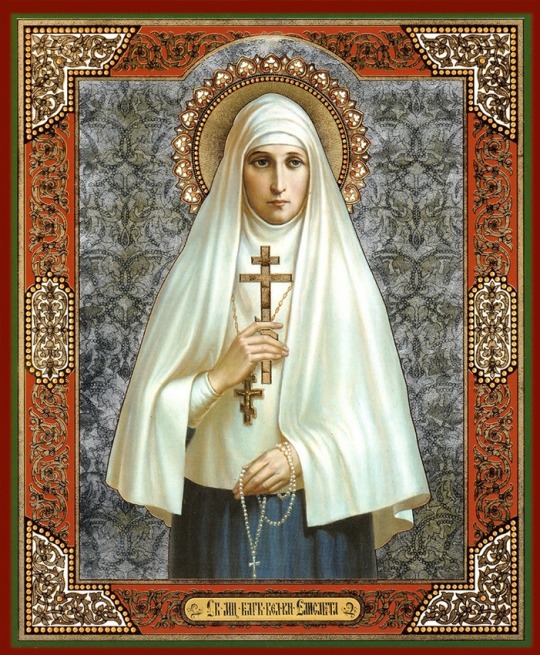
"I took this step only out of deep faith and I feel that I must appear before God with a pure and believing heart. […] You say that the outward brilliance of the church fascinated me. In this you are wrong. Nothing external attracts me, and not worship - but the foundation of faith. External signs only remind me of the internal.”
-Saint Elizabeth the new martyr in a letter to her father asking for his blessing to convert to the Orthodox faith.
#books#history#literature#religion#theology#mysticism#esotericism#orthodox#christian#christianity#orthodox christian#orthodox church#orthodox christianity#russian orthodox#russian saint#russia#romanov dynasty#romanov family#grand duchess elizabeth#saint elizabeth#monarch#monarchy#religious#religious art#religious quote#martyrs#martyr
163 notes
·
View notes
Text

The Visitation of the Virgin to St. Elizabeth, "Master of 1518" (Goosen van der Weyden?) or studio, ca. 1515
#Advent#art#art history#Master of 1518#religious art#Biblical art#Christian art#New Testament#Gospels#Visitation#Virgin Mary#Saint Elizabeth#Mannerism#Mannerist art#Northern Mannerism#Flemish art#16th century art#oil on panel#National Gallery#National Gallery London
86 notes
·
View notes
Text
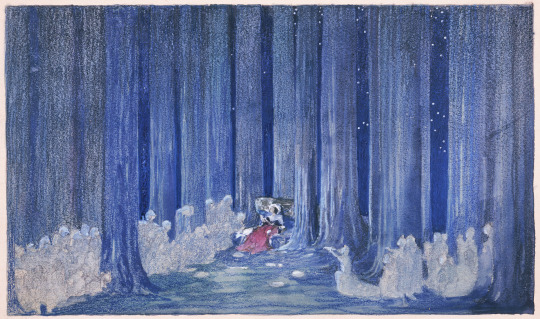
Joseph Urban (1872-1933), 'Saint Elizabeth (Die Legende von der Heiligen Elisabeth), 1918
Source
#joseph urban#austrian-american artists#St. Elizabeth#saint elizabeth#vintage illustration#vintage art
55 notes
·
View notes
Photo
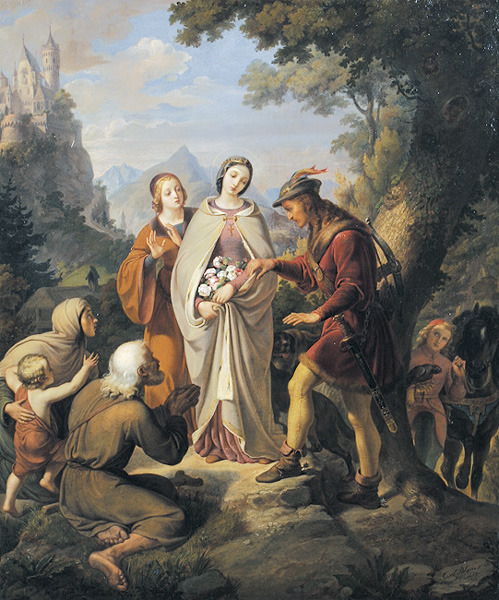
Karl von Blaas (Austrian, 1815-1894)
Das Rosenwunder der Hl. Elisabeth, 1839
St. Elizabeth of Hungary is perhaps best known for her miracle of the roses which says that whilst she was taking bread to the poor in secret, she met her husband Ludwig on a hunting party, who, in order to quell suspicions of the gentry that she was stealing treasure from the castle, asked her to reveal what was hidden under her cloak. In that moment, her cloak fell open and so that she would not have to lie, or be punished by the noble Germanic, according to legend God made the contents of the basket into roses.
This proved to Ludwig that God’s protecting hand was at work. Her husband, according to the vitae, was never troubled by her charity and always supported it. In some versions of this story, it is her brother in law, Heinrich Raspe, who questions her. Hers is the first of many miracles that associate Christian saints with roses, and is the most frequently depicted in the saint’s iconography.
#karl von blaas#saint elizabeth#elizabeth of hungary#art#fine art#austrian art#european art#saint#catholic#catholicism#christian#christianity#Christendom#christian art#european#europe#castle#austria
190 notes
·
View notes
Text
youtube



#protoje#african#afrakan#kemetic dreams#africans#brownskin#brown skin#afrakans#reggae#contemporary reggae#Jamaica#Oje Ken Ollivierre#saint Elizabeth#dub#koffee#coffee#african culture#Youtube
15 notes
·
View notes
Text
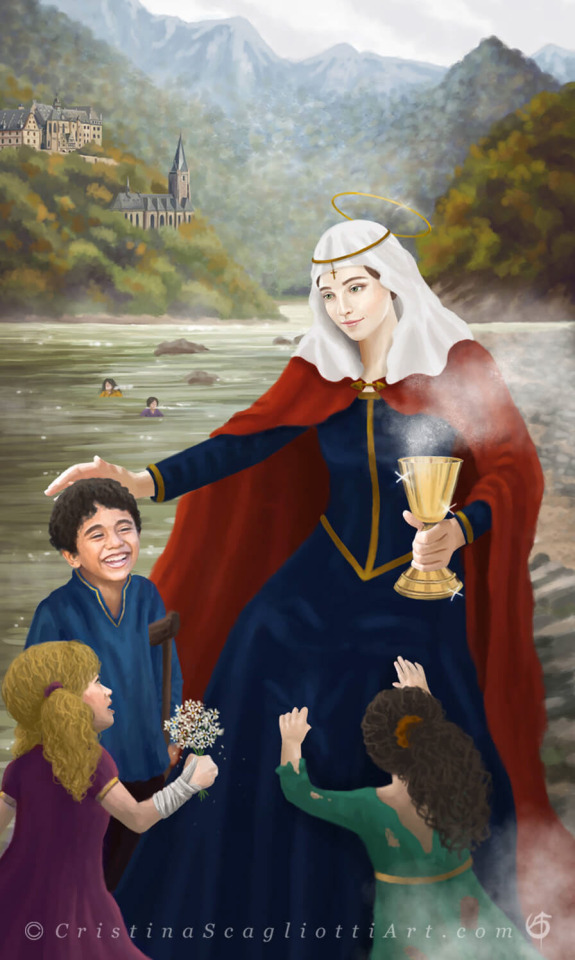
Queen of Chalices. Art by Cristina Scagliotti, from Mystical Tarot of the Saints.
Saint Elizabeth
#Cristina Scagliotti#Mystical Tarot of the Saints#Queen of Cups#Queen#Cups#Minor Arcana#Tarot#Christianity#Saints#Saint Elizabeth
5 notes
·
View notes
Text

Boys Playing Cricket in Ballard’s Valley. Saint Elizabeth, Jamaica. 2023.
#photography#film#jamaica#travel photography#Saint Elizabeth#Ballard’s Valley#shoot film#35mm photography#35mmclub#35mm film#Nikon#nikon8008s#country
8 notes
·
View notes
Photo

Elísabeth Zacharíæ magnum virum génuit. Joánnem Baptístam, præcursórem Dómini.
Elizabeth, the wife of Zacharias, was the mother of a mighty man. Even of John the Baptist, the Fore-runner of the Lord.
81 notes
·
View notes
Text

JAMAICA VLOG PINNED 🖤💛💚🇯🇲
#me#video#vegan#follow#instagram#foodie#black girls#black vegans#blackchefs#black owned#jamaica#mine#black girl magic#vegetarian#Saint ann#st ann#saint thomas#saint Elizabeth#ask#follow me#nature#green#mood#sza#Rihanna#beyonce
24 notes
·
View notes
Text

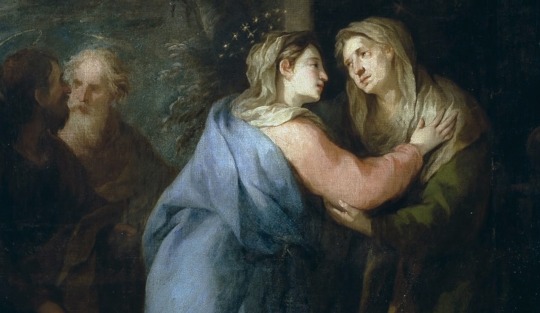
The Visitation
#the visitation#Luke 1#Luke 1:40-45#god loves you#gospel of luke#blessed art thou among woman#blessed virgin mary#mother mary#mother of god#mother of Jesus#saint elizabeth#st elizabeth#john the baptist#jesus christ our saviour#jesus’s mom#rosary#mysteries of the rosary#joyful mysteries#traditional catholic#mine#christian blog#catholic#biblical womanhood#catholicism#traditional femininity#bible in a year#catholic aesthetic#catholic art
38 notes
·
View notes
Text

Creativity — like human life itself — begins in darkness.”
— Julia Cameron
#jamaica#sunset#beach#black tumblr#danielle myers#photography#nature#beachlover#rainyweather#saint elizabeth#st. Elizabeth#st. Elizabeth Jamaica
12 notes
·
View notes
Text

"Magnificat anima mea Dominum
Et exultavit spiritus meus in Deo salutari meo...
My soul proclaims the greatness of the Lord
my spirit rejoices in God my Savior..." Luke 1: 46-55
Made with pencil colors and markers at November 29 of 2022
#Advent#Advent Calendar#Advent 2022#Advent Calendar 2022#Steps to the Manger#Steps to the Manger 2022#Drawing challenge#Visitation Mistery#Incarnation of God#Saint Mary#Saint Elizabeth
2 notes
·
View notes
Text

The Visitation, Master of the Litoměřice Altarpiece, ca. 1505
#art#art history#Master of the Litoměřice Altarpiece#religious art#Biblical art#Christian art#Christianity#New Testament#Gospels#Advent#Visitation#Virgin Mary#Saint Elizabeth#Czech art#Bohemian art#16th century art#tempera on wood#National Gallery Prague
92 notes
·
View notes
Text
The Visitation (detail). Painted by William-Adolphe Bouguereau (1825-1905) in 1885. 353 x 190 cms. Church of Saint-Vincent-de-Paul, Paris, France. It is held by some Catholic theologians that the purpose of this visit was to bring divine grace to both Elizabeth and her unborn child. Even though he was still in his mother’s womb, John became aware of the presence of Christ, and leapt for joy as he was cleansed from original sin and filled with divine grace. Elizabeth also responded and recognised the presence of Jesus, and thus Mary exercised her function as mediatrix between God and man for the first time.
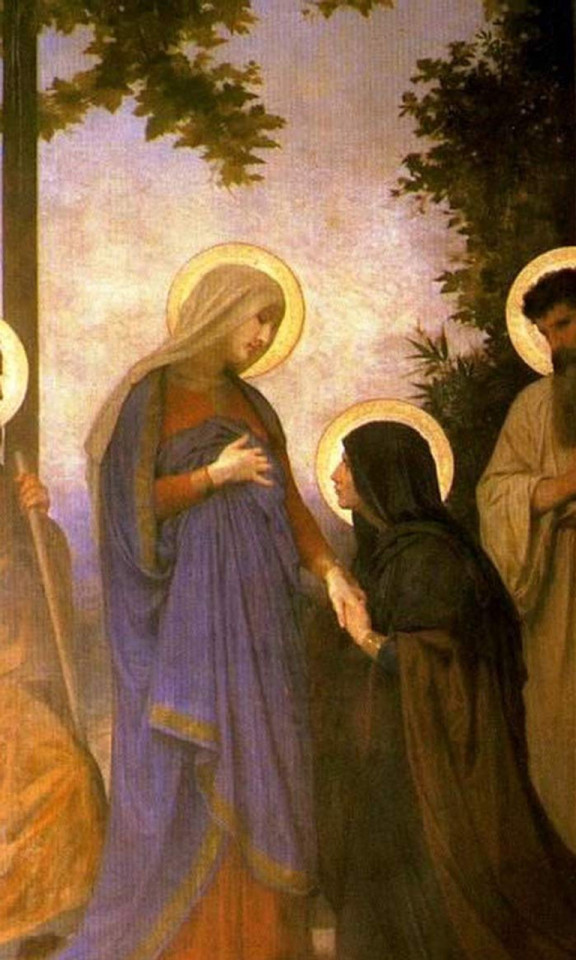
#art#catholic#virgin mary#madonna#nostra signora#nuestra señora#our lady#visitation#william adolphe bouguereau#bouguereau#saint elizabeth#saint joseph
4 notes
·
View notes
Photo
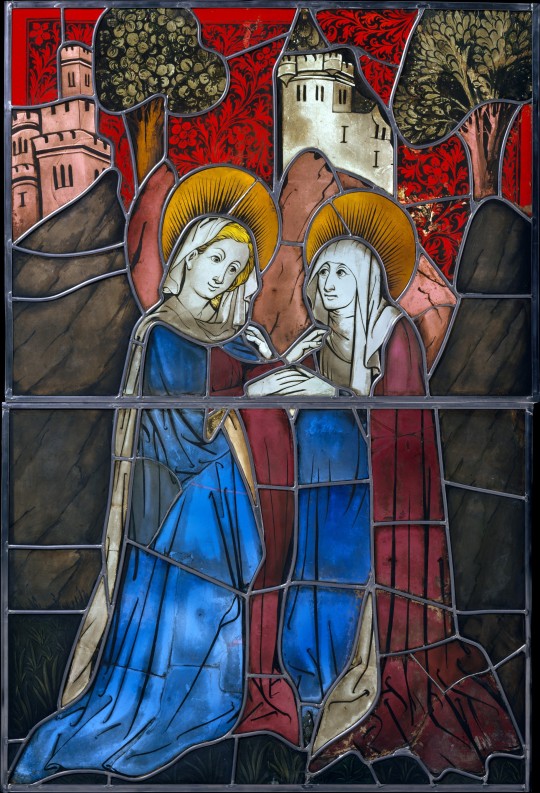
Stained Glass Panel with the Visitation, 1444, Middle Rhine.
Praying the Rosary with Pope John XXIII
Joyful Mysteries - Second Mystery - The Visitation
What gentleness and charm in this three months’ visit made by Mary to her beloved cousin! Each of them is about to bear a child, but for the Virgin Mother this is the most sacred maternity that it is possible to imagine on earth. Their two songs mingle and respond in a sweet harmony: ‘Blessed are you among women’ [Luke 1:42] on the one hand, and on the other: ‘God my Savior has regarded the low estate of his handmaiden: for behold, henceforth all generations will call me blessed’ [Luke 1:48].
What takes place here, at Ain-Karim on the hill of Hebron, sheds a light, both very human and divine, on the relations that bind Christian families, brought up in the ancient tradition of the holy rosary: the rosary recited at every evening at home, in the family circle; the rosary recited not just in one or a hundred or a thousand families but by every family, by everyone, everywhere in the world, wherever there is one of us ‘suffering, fighting, praying,’ someone who has answered another call to the priesthood or to missionary service or to a dream which will turn out to be and apostolate; or wherever men are constrained by those legitimate if obligatory demands of labor or trade, military service, study, teaching or any other occupation.
There's a beautiful reunion, during the ten Hail Marys of the mystery, of so many countless souls, linked together by blood or by domestic ties, in a relationship which hallows and thereby strengthens the love that binds our dearest ones together: parents and children, brothers and relations, people from the same locality, people of the same race. All this with the purpose and intention of sustaining, increasing and irradiating that universal charity, the exercise of which is the most profound joy and supreme honor of our lives.
- collected in Journal of a Soul (page 364), trans. Dorothy White
#Catholicism#Christianity#Virgin Mary#Saint Elizabeth#The Visitation#Joyful Mysteries#Pope John XXIII
6 notes
·
View notes
Text
07. The Visitation by Jorge Sanchez Hernandez
Jorge Sánchez Hernández [1926 – 2016] was a Mexican Catholic painter and continuator of the style of 17th century Spanish Baroque painters. Collections include: Portraits of Colonial Nuns; Scenes from Ancient Mexico; the Sor Juana Inés de la Cruz Collection; the Mother of Jesus Collection; the Gospel Scenes Collection; the Collection with scenes from the story of Our Lady of Guadalupe; and…

View On WordPress
#Ain Karim#Blessed Virgin#Jorge Hernandez#Jorge Sanchez Hernandez#joyful mysteries#magnificat#Saint Elizabeth#Virgin Mary#visitation
4 notes
·
View notes